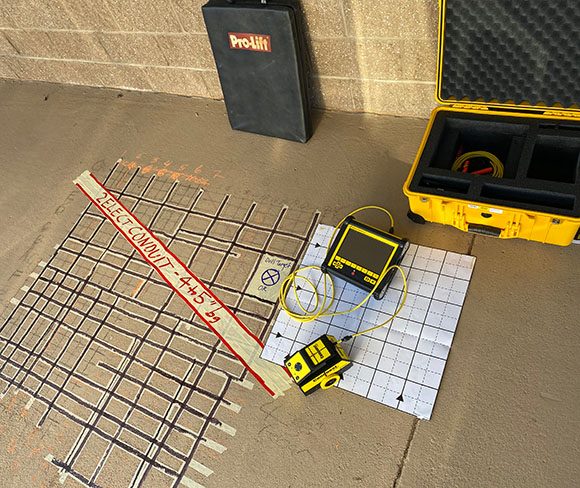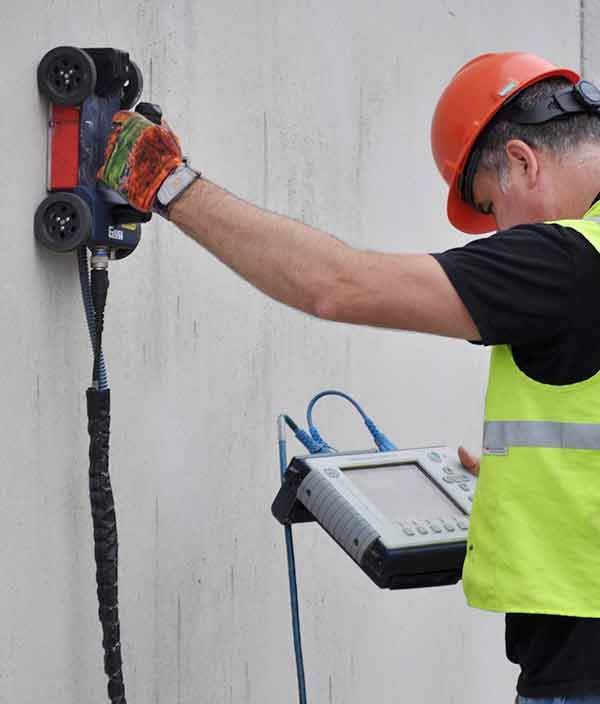Advanced Concrete Scanning Techniques: Guaranteeing Architectural Stability
Advanced Concrete Scanning Techniques: Guaranteeing Architectural Stability
Blog Article
Unveil the Transformative Power of Concrete Scanning in Optimizing Efficiency and Safety
Concrete scanning has actually become an important tool in the building and construction sector, providing unparalleled advantages in boosting project efficiency and ensuring safety and security standards. By utilizing sophisticated technology, concrete scanning enables experts to see beyond the surface, revealing covert complexities that might impact the structural stability of a structure. The transformative power of concrete scanning depends on its capacity to provide in-depth understandings and real-time information, changing just how tasks are planned and implemented. As we look into the ins and outs of this cutting-edge method, a world of possibilities opens up, showcasing a brand-new age of building techniques that focus on accuracy and safety.
Relevance of Concrete Scanning
Making sure the structural integrity and safety of building projects begins with the crucial action of carrying out comprehensive concrete scanning. Concrete scanning is a non-destructive method utilized to spot and map subsurface elements within concrete frameworks.
In addition, concrete scanning helps in optimizing task timelines and spending plan by staying clear of unanticipated costs and delays that might occur due to unexpected obstructions within the concrete. Ultimately, spending in thorough concrete scanning is a positive approach that boosts both efficiency and safety and security in construction tasks.
Exactly How Concrete Scanning Functions
Concrete scanning operates as a crucial tool in building tasks by employing sophisticated technologies to discover and map subsurface components without causing architectural damage. Ground Passing Through Radar (GPR) and Electromagnetic Induction (EMI) are two key approaches used in concrete scanning. GPR works by releasing high-frequency radar pulses right into the surface, which recover when they experience subsurface objects or gaps. The time taken for the signal to return suggests the depth and location of the items. EMI, on the other hand, uses magnetic fields to identify differences in material make-ups, such as determining rebar or avenues within concrete structures.
Throughout the scanning procedure, the information gathered is analyzed in real-time, enabling prompt identification of prospective hazards or obstacles under the surface area. By employing these sophisticated modern technologies, concrete scanning significantly lowers the risk of pricey damages and injuries on building sites.
Benefits of Concrete Scanning
One of the main benefits of concrete scanning is the ability to discover and find ingrained objects such as rebar, post-tension cable televisions, and conduits properly. Concrete scanning assists in planning and designing extra effectively, as it provides accurate details about the place and deepness of architectural elements.

Study: Concrete Scanning Success

In another case, a building and construction company made use of 3D concrete scanning to assess the condition old concrete structures in a historical structure. The in-depth scans provided beneficial insights right into the level of damage and helped prioritize maintenance initiatives efficiently. By proactively resolving areas of issue recognized through scanning, the company had the ability to prolong the life expectancy of the structure and make sure passenger safety.
These study highlight the transformative power of concrete scanning in boosting efficiency, precision, and security in construction tasks.
Executing Concrete Scanning in Projects
Carrying out sophisticated scanning modern technologies throughout building jobs has ended up being significantly necessary for improving precision and security. By incorporating concrete scanning into job planning and execution, building and construction teams can identify prospective risks, such as rebar or post-tension wires, concealed within concrete frameworks. This proactive method decreases the threat of crashes, delays, and costly rework, eventually leading to extra efficient job timelines and budget plans.
To carry out concrete scanning effectively, job managers need to work together very closely with knowledgeable scanning specialists to identify the most ideal scanning techniques for the specific job demands. Involving scanning specialists from the beginning of a project enables the team to develop detailed scanning strategies that deal with key locations of problem and make certain detailed information collection.
Moreover, integrating concrete visit this page scanning into regular job process can streamline decision-making processes, as real-time check information provides instant understandings into the condition of concrete structures - Concrete Scanning. This data-driven approach helps with notified problem-solving and allows groups to make changes immediately, fostering a society of effectiveness and safety throughout the project lifecycle

Final Thought
To conclude, concrete scanning plays a crucial role in boosting effectiveness and security in building jobs. By making use of innovative modern technology to map and spot out underlying structures within concrete, this procedure assists to stop costly blunders, make sure architectural honesty, and decrease dangers on site. With the capability to uncover concealed elements and supply precise information, concrete scanning confirms to be a useful device for maximizing task results and optimizing overall success.
Concrete scanning is a non-destructive approach made use of to find and map subsurface elements within concrete frameworks. In addition, concrete scanning aids in maximizing project timelines and budget by avoiding unexpected prices and delays that may emerge due to unpredicted obstructions within the concrete. One remarkable situation research study includes a large-scale remodelling task where concrete scanning played a crucial role in guaranteeing project success.In an additional instance, a building and construction firm made use of 3D concrete scanning to evaluate the problem of aging concrete frameworks in a historical structure. By incorporating concrete scanning right into project preparation and execution, building teams can official website determine possible dangers, such as rebar or post-tension wires, hidden within concrete frameworks.
Report this page